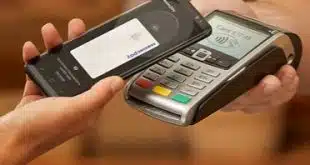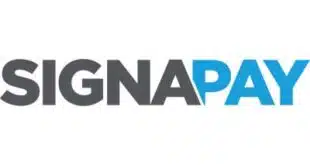It may well be, but its effects are very much with us—and are lasting.
Two years after it first struck, as the Covid-19 pandemic seemingly winds down, the payments industry is adapting to changes Covid coaxed into place that will stick around a lot longer than the virus that caused them.
As a case in point, contactless payments have surged in the past two years. They were introduced in the United States in the mid-2000s, only to experience mediocre adoption. Consumers didn’t see the point of tapping when swiping was quicker and a process they were used to. Then the Covid-19 coronavirus turned into a pandemic and made consumers hesitant to touch shared public devices, such as point-of-sale terminals.
As more businesses eventually reopened, consumers found their credit and debit cards and their mobile wallet-equipped smart phones could be tapped against payment terminal to complete a transaction. Finally, issuers, merchants, and acquirers were in sync.
The years-long work of refitting merchants with EMV-compatible terminals that also had near-field communication wireless technology began paying off. All the payment cards now came issued with not only an EMV chip, but also contactless payment technology.
And, most important, in 2020 and 2021, consumers were ready to try a new way to use their cards and smart phones. How dramatic was this change? Take a look at just one week selected more or less at random. In the week ending July 18, 2021, contactless payments ballooned 597.7% from the baseline period in March 2020, prior to the containment actions taken to stifle the virus, according to payments provider CardFlight Inc.
Broadened use of contactless payments by consumers is one lasting change from the past two years.
The pandemic’s impact extends beyond consumers. The payments industry adapted to new technology, new ways of conducting business, and new markets. It’s as profound a change for the payments industry as any seen at any other time.
“While the world is beginning to return to a sense of normalcy, it’s clear that consumers will continue to demand more from merchants when it comes to providing seamless digital experiences,” Brian Dammeir, president of North America for Adyen NV, the Netherlands-based payment processor. “Many of the effects of Covid on how consumers pay and transact are going to be permanent.”
Gaining ‘Massively’
Permanent change in payments isn’t affecting just consumers. Payments companies, too, have adapted, and some expect to continue on with wholly new business practices. For some, such as Usio Inc., a San Antonio, Texas-based payments provider, the impact of Covid opened a new market in government payments, says Louis Hoch, Usio’s chief executive. “The biggest benefit of Covid is, we launched into government payments,” Hoch says. Usio went from processing transactions for no cities to more than 200, and that number will only increase, he says.
These experiences are not uncommon among payments practitioners, and extend even to how they conduct business internally.
“From the perspective of our day-to-day activities, [Covid] temporarily put a stop to in-person meetings, which meant we moved to virtual meetings,” says Eric Christensen, chief payments officer at Digital River Inc., a Minnetonka, Minn.-based online payments provider. “We’ve learned that we can still do business without flying executives and salespeople to meetings that can be done virtually. In-person meetings still have their place, but we are being mindful of when that makes sense and when it does not.”
Consumers also adapted, especially when it came to in-person payments. “Electronic payments usage has gained massively in popularity in the past two years, especially payment methods that are contactless or allow people to minimize interaction with others,” says Sheridan Trent, senior analyst at Omaha, Neb.-based The Strawhecker Group, a payments research firm.
In February, e-commerce spending was up 85.9% compared to February 2019, according to Mastercard Inc.’s SpendingPulse report. When it comes to contactless payments, 74% of cardholders who used the payment method intend to keep using it, a joint survey from The Strawhecker Group and the Electronic Transactions Association revealed in November.
This all points to an even greater shift to cashless payments, says Justin Passalaqua, chief market officer for Worldline S.A.’s North America operations. “More and more people are now forced to get out of their habit of using cash or writing checks,” he says. “The mentality of the end user is going away from that.”
Payments companies are experiencing their own version of this transformation, he says. There’s now more importance placed on the value of integration, he says. Indeed, Bezons, France-based Worldline, which is selling its terminal business that includes Ingenico, could soon have additional resources, following the sale, to concentrate on software-as-a-service and other digital businesses connected to point-of-sale services, Digital Transactions News reported in February.
A Permanent Change
It’s among consumers, however, that the most profound changes have occurred during the pandemic.
“As the last couple of years have evolved, the most pronounced permanent change is the consumer preference for digital-first experiences, even after lockdowns and restrictions have been lifted,” Dammeir says. “Especially in the hospitality, food and beverage, retail, and travel industries, guests are now accustomed to seamless digital experiences, making it hard to imagine a world where we go back to the way things used to be.”
Specifically, he says, routine use of NFC contactless-enabled cards and phones is here to stay. “With the pandemic and sanitation concerns, large numbers of consumers were educated on how to use ‘tap-to-pay’ cards, which is not only safer but results in much quicker transactions than dipping a card,” Dammeir says.
Contactless wasn’t the sole contactless technology to find favor amid the pandemic. “The pandemic saw a huge increase in the use of QR codes and Web and app-flows across the board, because they enable consumers to use their own phones,” Dammeir says. “Everything from restaurant menus to paying to checking in to a hotel is now being done with QR codes and apps.”
Strawhecker’s Trent has the same impression. “Whereas before the pandemic there was less knowledge of how QR codes work, most consumers are now comfortable seeing, and using, QR codes to pay their bills, to pay for things in situations where cash and credit cards might not be accepted, such as for small merchants like at farmer markets,” she says.
Contactless adoption is just one of the lasting changes Trent sees. “Current trends show that digital-wallet usage, buy now, pay later usage, e-commerce, and things like buy online, pick up in store are becoming more widespread,” she says. “And now that people have gotten used to these types of payment methods and have learned more about how they work and how to set them up, I don’t believe we’ll see a backslide. I would [consider] consumer usage of digital payments to be a permanent change.”
That change is reflected on the business side, too. Usio’s foray into government disbursements started during the pandemic. That included government-backed incentive programs to get a Covid vaccination. That helped move Usio’s municipality business from zero clients to more than 200, he says. This fit in with Usio’s other major business lines, which include automated clearing house transaction processing, prepaid card issuing and processing, and its payment facilitator business.
“We actually issue more virtual than plastic cards,” Hoch says of Usio’s prepaid business. Usio’s diversification, which left it with not too many retail accounts, such as restaurants and retailers, meant the negative impact of the pandemic was diluted.
The pandemic did have an impact on some internal processes at Usio. Like most businesses, it had to adapt to social distancing and masking protocols, as well as limitations on travel and face-to-face meetings. “We traveled less when Covid was bad,” Hoch says. Usio staff learned to use video-conferencing tools, a skill that continues in use today and will remain a part of the company’s selling process.
At Worldline, which has operations across the globe, the pandemic put even more emphasis on compliance with local legislation, Passalaqua says. The importance of flexibility gained ground.
The Perfect Storm
But what about the pandemic’s impact on metrics such as the cost of acquisitions, revenue, and profits? While surely the pandemic’s impact was more severe on some than on others, for EVO Payments Inc., 2021 ended as a year of recovery. Revenue for all of 2021 totaled $496.6 million, up 13% from 2020, EVO reported earlier this year. And issuer and acquirer American Express Co. said its discount revenue, it’s largest source of income, totaled $7.48 billion in the 2021 fourth quarter, up 35% from the same period a year prior.
For small merchants, those with less than $5 million in annual credit and debit card volume, the cost of acceptance didn’t change materially from 2019 to 2021, going from 2.81% to 2.79%, says Josh Istas, senior director of analytics, at The Strawhecker Group. “What did change is the increase in credit and debit [card] volume compared to cash as consumers increasingly used electronic payment methods throughout the pandemic,” Istas says.
Cash displacement, a persistent objective among electronic payments advocates, seems to have prospered during the pandemic. Data from the Federal Reserve released in December showed that ACH transactions increased in 2020 by number of transactions, while the share of payments claimed by cards held steady.
The Fed backs up the testimony of contactless payments growth. The number of contactless card payments soared fully 172% in 2020 over 2019, reaching 3.7 billion, Digital Transactions reported then. This performance followed an already impressive rise of 121% in 2019 over 2018. The big increase in 2020 left contactless at 4.63% of all in-person card payments, according to the study, up from 1.7% in 2019 and 0.77% in 2018.
It’s not just in-person payments that changed during the pandemic. Remote or online payments also soared. In 2021, U.S. e-commerce sales accounted for 13% of all retail sales, says FIS Inc. in a report released in March. That is expected to grow at a compound annual rate of 10% from 2021 to 2025.
Online channels such as buy now, pay later have ballooned in use in the past couple of years and show no sign of weakening. FIS forecasts that global BNPL volume will increase to 5.3% of all e-commerce transaction value by 2025, up from 2.9% in 2021.
Digital BNPL options tend to be easy to use, with a short application process and a low barrier to entry, Trent says, “and for many consumers, they offered a way to enhance buying power and extend their budgets.”
The growth in BNPL, indeed, had a major impact at Digital River. “I think it was the perfect storm of a new consumer-friendly payment option hitting the market and an increase in new online shoppers,” Christensen says. “BNPL companies were the benefactor here and now have built a loyal consumer base going forward.”
Another change that appears to be sticking around is the use of digital wallets. FIS says they accounted for 48.6% of all global e-commerce transaction value in 2021. At Adyen, Dammeir says mobile wallets like Apple Pay and Google Pay are experiencing greater adoption, perhaps leveraging the similar tap-and-go payment experience of contactless credit and debit cards.
Payments companies have learned many lasting lessons from the pandemic. For Usio, it was that diversification, a strategy it had in place prior to 2020, works well for it. “In 2020, we took maybe a $1-million hit from Covid,” Hoch says, “but increased $3 million in new sales. Then things accelerated in the past year.”
Play for the Future
Is the pandemic finally over? Hard to say, here in the early months of 2022. But the payments business is clearly acting as if it is. And expectations are the the growth of digital payments is here to stay.
“We believe e-commerce will continue to grow at a pace that is more than organic, and not pushed by the need we saw at the beginning of the pandemic,” Christensen says. “We know that companies are investing in their digital strategies and their cross-border capability as they play for the future. As our clients
grow globally, we grow as well, and I expect that to continue.”
Perhaps one of the most significant and lasting effects of the pandemic on the payments industry is the push it created among consumers. “Probably one of the biggest effects on payments is how it’s pushed people into trying new things,” Trent says. “They almost need a reason to do so. For most people, they have to have a reason.”
Actions to contain the pandemic did that. Now, the results are blooming with the Spring.





